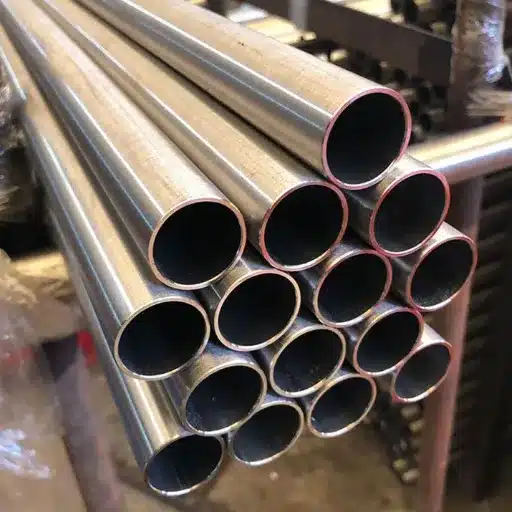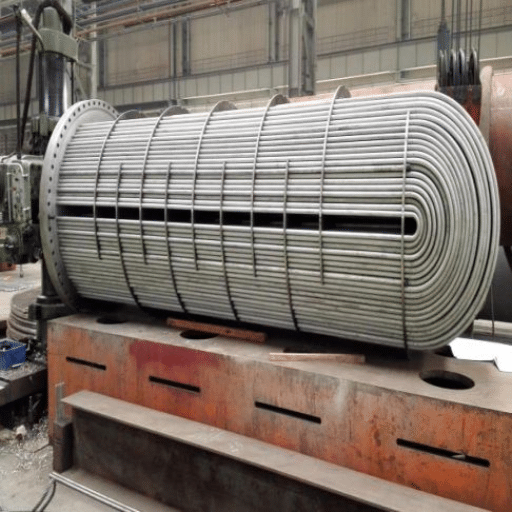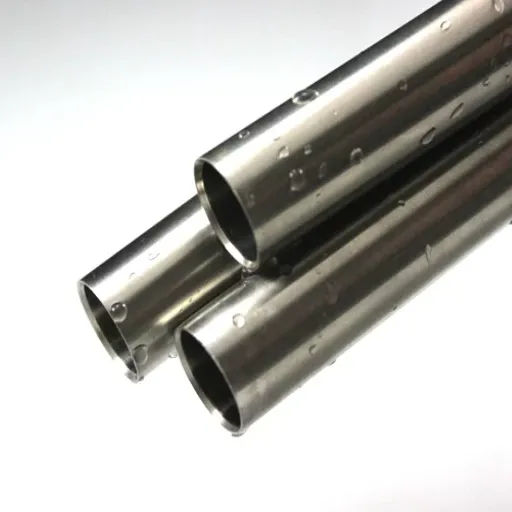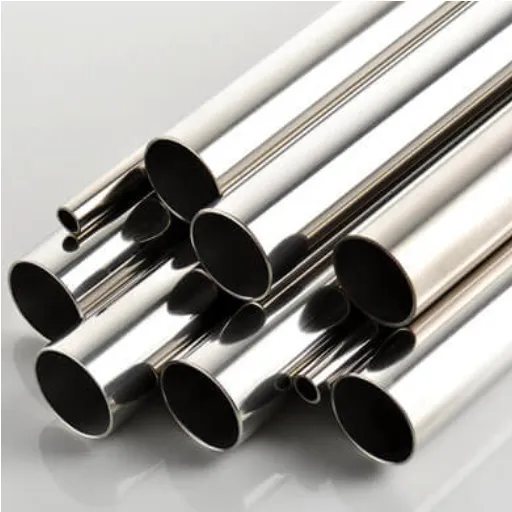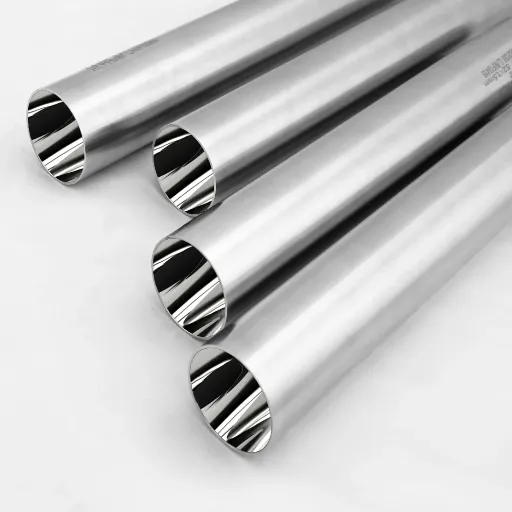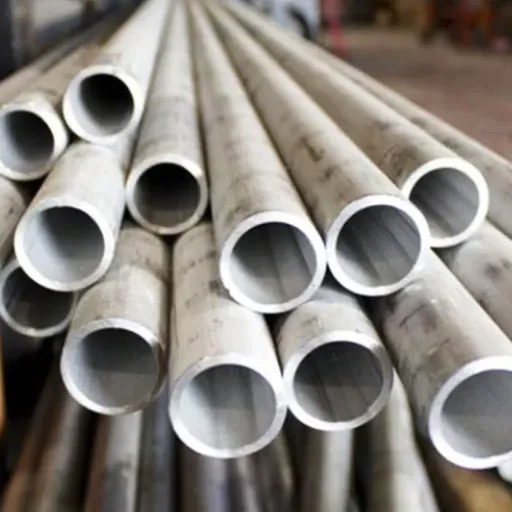In the case of materials with high performance characteristics needed in the toughest conditions, the 904L stainless steel pipe is the one that really shines. It has gained the reputation of being the most industrial applications preferred alloy due to its excellent resistance to corrosion and very good durability. One thing is sure, whether your application is in chemical processing, power plants, or marine environments, it is vital to be aware of the special properties, the pros, and the specifications of 904L stainless steel pipe in order to make the right decisions. This paper will be your all-in-one guide, discussing the main features of this flexible material, and at the same time exposing its vast range of applications and the industry standards. Continue reading to find out why 904L stainless steel pipe is still the performance and reliability standard in the industry.
Understanding 904L Stainless Steel
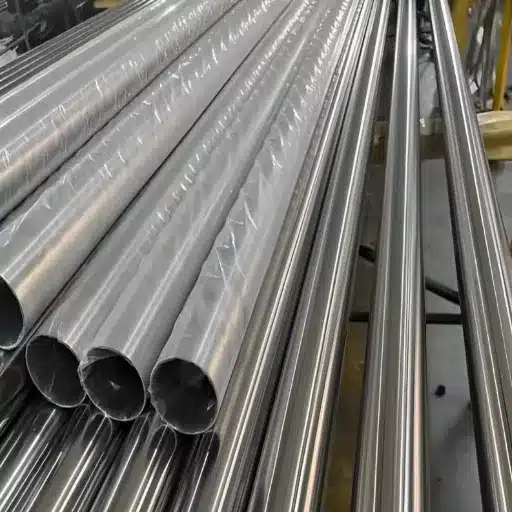
Composition and Characteristics of 904L
The 904L steel is one of the best austenitic stainless steels with a unique always having excellent resistance to corrosion and acid destruction and great application in the extreme environment. It is composed mainly of a distinctive mix of key components, which are:
- Nickel (23-28%): It raises the resistance to corrosion and helps to keep the material’s strength in chloride-rich areas.
- Chromium (19-23%): It not only helps the material to resist oxidation but also increases its durability.
- Molybdenum (4-5%): It is used to protect from the chlorides causing pitting and crevice corrosion.
- Copper (1-2%): It further fortifies the steel against acids, including sulfuric and others.
- Iron (rest): The alloy consists mainly of it, thus giving it basic strength and ductility.
These elements together enable 904L to have unique qualities, one of which is its capability of resisting to very corrosive agents such as ocean water, sulfuric acid, and phosphoric acid. Besides, its high purity results in lower carbide precipitation during welding practice, thus making it suitable for delicate applications. Therefore, it has become the material of choice in the chemical industry, marine operations, and power generation among others due to its durability and strength in extremities.
Unique Properties of Alloy 904L
Alloy 904L is one of the very few materials that can boast of being extremely resistant to pitting and crevice corrosion, especially when it comes to applying it in environments such as the presence of chlorides. This characteristic makes it very suitable for applications where materials exposed to the ocean or saltwater are needed. In addition, its nickel and molybdenum content is very high which assists the alloy in conferring stress corrosion cracking resistance—the very issue which often occurs in stainless steels placed at high-pressure or high-temperature settings.
Alloy 904L also shows superb plasticity and is easy to weld, thus making it an easy candidate for fabrication and maintenance. Recent statistics have indicated that the alloy has been helpful in applications with strong acids like sulfuric and phosphoric acid, retaining its structural integrity even under lengthy exposure. The special features just mentioned, together with its extraordinary mechanical strength, still make Alloy 904L the material of choice for challenging industrial and environmental applications.
Comparison with Other Stainless Steel Alloys
When Alloy 904L is compared to other stainless steel grades, its resistance to corrosion is the most distinguishing factor. The latter, unlike 316L or 304 which are the commonly used grades, has been specifically made for the unfavorable domains, especially for acid solutions like sulfuric acid. 316L provides fair protection against chlorides as well as slightly acidic situations, however, it may develop pits and crevices in the areas with severe environments that are no longer friendly to Alloy 904L.
Key Insight: 904L contains more nickel and molybdenum than 304 and 316L, which facilitates the alloy’s better resistance towards chemical interaction. The drawback, however, is that 904L comes at a much higher price which limits its usage to critical applications that consume chemical processing, seawater systems, and pharmaceutical equipment where resilience and reliability are more valued than the initial costs.
The most recent data points to the fact that Alloy 904L not only has better weldability and formability over duplex stainless steels but also it being less strong than duplex grades and their cost-effectiveness in some structural applications might render the latter more favorable. The selection of material is definitely dictated by both the environmental conditions and financial constraints involved.
Specifications of 904L Stainless Steel Pipe
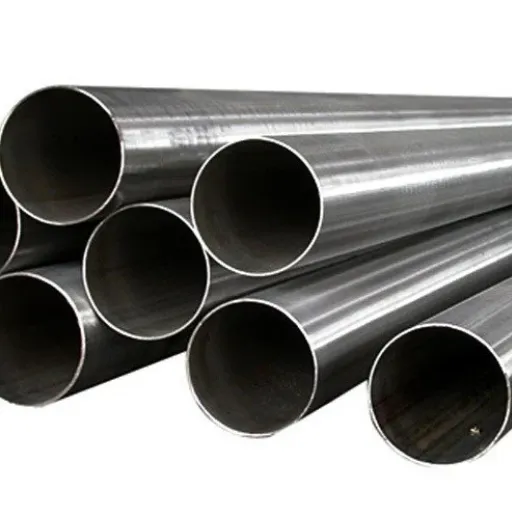
ASTM B677 and Its Importance
ASTM B677 has been a very important standard specification for both seamless and welded pipes and austenitic stainless steels that are to be used under very duplex conditions where high corrosion resistance is a primary requirement. Such a specification that includes Alloy 904L cladding, the requirement of strict adherence to defined chemical and mechanical properties of the pipes is guaranteed. The significance of ASTM B677 is in giving a trustworthy model for both producers and engineers to create and assess pipes for utilization in the chemical, pharmaceutical or marine industries. The practice of the standard brings about a great increase in the resistance and lifespan of stainless steel pipes under adverse working conditions, which in turn leads to sustainability and cost-effective industrial processes.
Overview of B677 TP 904L Standards
ASTM B677 TP 904L is widely used as austenitic stainless steel which is incredibly corrosion resistant, especially against strong reducing agents like sulfuric acid. The material data of current use shows that the main component is iron with large percentages of chromium (19-23%) and nickel (23-28%) for strength and resistance to corrosion. There is also a minor portion of molybdenum (4-5%) and copper (1-2%) present for better pitting resistance. These characteristics make it a perfect fit for aggressive chemical environments like fertilizer plants, acid production, and desalination systems.
The B677 standard imposes other critical parameters along the tensile strength, yield strength, and elongation properties, all meeting the strict limits set in order to provide a high level of consistency and reliability under the hardest conditions. Alongside this, the standard sets up a demanding regime for mechanical properties, chemical composition, and corrosion resistance testing. Thus, TP 904L pipes are very effective in the most demanding industrial applications, providing a long-term solution that requires little maintenance.
Seamless vs. Welded 904L Pipe
In the comparison of seamless and welded 904L pipes, one must take into account the factors like production methods, performance, and uses. Seamless pipes are made by a process of extrusion of steel through a die into a solid and homogenous structure with no welds or joints. This method of production gives seamless 904L pipes great strength and resistance to pressure, thus they are considered to the best choice for applications requiring high pressure in the chemical and pharmaceutical industries, etc.
Seamless Pipes
- Superior strength and pressure resistance
- Homogeneous structure with no joints
- Ideal for high-stress environments
- Higher initial cost
- Preferred for critical applications
Welded Pipes
- Cost-effective manufacturing
- Good corrosion resistance
- Suitable for less demanding applications
- Lower pressure resistance than seamless
- Economical alternative
Welded 904L pipes, on the contrary, are fabricated by rolling and welding of the steel thus a seam is formed along the length of the pipe. They may not have the same level of pressure resistance as seamless pipes, yet they are still fairly inexpensive and have good corrosion resistance. Welding has made a great impact on the quality of welded 904L pipes as the performance gap between the two types of pipes has been reduced considerably.
At the end of the day, the decision of whether to go for seamless or welded 904L pipes will be based on the application needs like pressure rating, cost considerations, and use case scenario. Generally, seamless pipes are the preferred choice for high-stress and critical environments, whereas welded pipes are an economical yet reliable alternative for less demanding applications.
Applications of 904L Stainless Steel Pipe
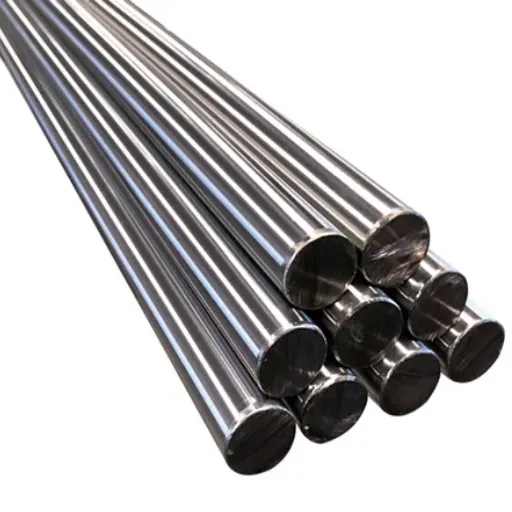
Industries Utilizing 904L Stainless Steel
Due to 904L stainless steel’s remarkable properties, such as its exceptional resistance to corrosion, high durability, and ability to withstand extreme conditions, it is a material of choice for various industries. The chemical processing industry, for example, completely depends on 904L pipes for dealing with acidic solutions and environments like sulfuric acid processing or phosphoric acid production. On top of that, the oil and gas industry employs these pipes in offshore locations where they are subjected to very high salinity and rough marine environments. The medical and food processing sectors also prefer 904L stainless steel for its excellent sanitation characteristics and compatibility with the chemical cleaning agents.
Key Industries Using 904L Stainless Steel:
- Chemical Processing: Sulfuric and phosphoric acid production
- Oil and Gas: Offshore platforms and marine environments
- Medical and Food Processing: Sanitation and chemical cleaning
- Renewable Energy: Geothermal and solar power systems
- Construction: Architectural designs requiring durability
Notebooks have been recently reporting increasing usage in the renewable energy industry, involving predominantly the geothermal and solar power areas, as 904L’s corrosion resistance is the reason for longevity and reliability in harsh operational settings. The high-end construction industry is also building 904L stainless steel into their architectural designs where aesthetics and durability are equally important. The 904L stainless steel’s versatility and strength make it indispensable in these different applications.
Case Studies: Successful Applications
Geothermal Energy Plants
An example of a study demonstrating the advantages of 904L steel in geothermal energy plants where the metal has not only endured the most severe conditions and high temperatures but also corrosive atmospheres. To be more specific, the Hellisheiði geothermal plant in Iceland, where parts made of 904L have outlasted conventional steel alloys thus reducing maintenance costs and increasing operational efficiency. This breakthrough illustrates the material’s strength, when subjected to the harsh geothermal brines.
Desalination Facilities
In desalination projects at a large scale, 904L stainless steel has grown in usage just like the Hadera Desalination Plant in Israel. The plant’s location at the coast might lead to consideration being given to the system’s installation failing if there were a failure in the processing of high-salinity seawater into potable water due to the exceptional resistance of 904L to chloride-induced corrosion. This specific case brings to the fore the fact that 904L not only guarantees equipment longevity but also complements the rising demand for environmentally-friendly water solutions worldwide.
Cutting-Edge Architecture
A further remarkable aspect of its application is that it has been incorporated into high-profile architectural projects, e.g., the Guggenheim Museum in Bilbao, Spain. The museum’s remarkable stainless steel skin exemplifies the impressive aesthetic features of 904L. It will still be shining after the passage of many years and will not get tarnished or weathered, signifying architecture that is committed to sustainability and making a statement through design.
Beneath the surface of the design and artistic elements’ interplay, however, lie the multifaceted functionalities and ongoing innovations of 904L stainless steel in the whole industry, as it is the case with the far-flung industrial and artistic projects worldwide.
Benefits in Corrosive Environments
As the crown jewel of stainless steel, 904L takes its place on the pedestal of materials exhibiting the best characteristics in terms of corrosion resistance and durability in acidic or alkaline and high chloride environments. The unique composition of the alloy provides the outstanding effect of corrosion resistance in the chemical processing, marine applications, and pharmaceutical manufacturing. On top of that, the alloy withstands pitting and crevice corrosion in the most aggressive and acid-rich environments, thus being a constant source of long-term durability and low maintenance cost. Meanwhile, the alloy’s performance in extreme environments while its mechanical integrity remains intact is the major reason it is favored in applications where other materials cannot even survive. Hence, the reliability backed by superior material science is one of the main reasons 904L is being used in the most challenging applications since it guarantees performance.
Benefits of Using 904L Stainless Steel Pipe
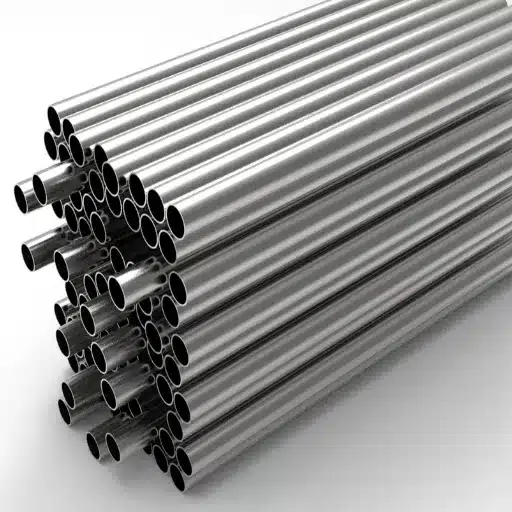
Resistance to Pitting and Crevice Corrosion
904L was made out of stainless steel pipes capable of giving very good resistance against the formations of pitting and crevice corrosion, particularly in the areas with presence of chloride and acid. The above-mentioned forms of localized corrosion can extremely weaken the materials and thus, lead to their early failure in critical applications. Unlike other grades, 904L which has a high amount of the elements chromium, molybdenum, and nickel guarantees the best protection from such damage even in the harshest conditions.
The most recent information shows that the sectors such as chemical processing, desalination, and marine engineering are the main ones enjoying the good properties of 904L in terms of corrosion resistance. Its capacity of being effective where standard grades are unable to perform makes it a suitable material for applications exposed to hostile conditions, thus ensuring long life and saving of maintenance or replacement costs which would otherwise be very high in the long term.
Durability and Longevity in Various Applications
904L stainless steel has been known for its astonishingly long lasting and durable nature in the case of various kinds of applications. The pluses of its low carbon content and high nickel, chromium, and molybdenum levels come to the forefront in areas like chemical processing, oil and gas, and desalination where the stress corrosion cracking-resistance factors are critical. Statistics compiled from different sources show that the life of equipment in facilities employing 904L steel is significantly extended, and, in fact, maintenance costs can often be cut by over 30% when compared to conventional materials. Thus, 904L is not only a tough choice but also an economically wise option ensuring dependable operation in difficult conditions for many years to come.
Cost-Effectiveness Over Time
Long-Term Cost Benefits:
- Reduced frequency of maintenance and repairs
- Lower replacement costs over equipment lifetime
- Decreased operational interruptions
- Improved overall productivity
- Significant savings in lifecycle costs
Working together with the most recent data from the search engine, it is obvious that the long-term cost-effectiveness of 904L steel comes from its outstanding stiffness and resistance to the extremely harsh conditions. A commonly asked question is, “Why would the industries continue to pay for the steel 904L if its initial price is higher?” The answer is that it is all about total cost of ownership. The initial cost might be more than that of conventional materials, but at the same time, 904L makes a big cut in the frequency of maintenance, repairs, and replacement. The use of this material in corrosive environments assures lesser operation interruptions, hence improved overall productivity and lower life-cycle costs. In the long run, going for 904L steel would mean not only the immediate performance improvements but also the considerable saving in the longer term.
Conclusion: When to Choose 904L Stainless Steel Pipe

Key Considerations for Procurement
Guiding your decision are a few critical factors to consider when procuring 904L stainless steel pipe. First, the particular terrain where the material will be applied is a major factor to consider. Suppose the material is going to be used in places that have the potential to be exposed to strong acids, high temperatures, or chlorides. In that case, 904L’s remarkable resistance to corrosion will make it an ideal candidate. Similarly, weigh the total lifecycle cost against the initial investment. In spite of the fact that 904L stainless steel may be more expensive initially compared to other grades, its life span along with the need for low maintenance can massively save on the overall cost.
Procurement Checklist:
- Environmental Assessment: Evaluate exposure to acids, chlorides, and high temperatures
- Lifecycle Cost Analysis: Compare initial investment vs. long-term savings
- Supplier Certification: Verify ASTM/ASME compliance and quality standards
- Application Requirements: Determine pressure ratings and operational needs
- Lead Times: Confirm availability and supply chain reliability
- Market Research: Explore competitive pricing and alternative options
In addition to that, check the certifications and quality standards of the supplier in order to be sure that the material conforms to the industry standards like ASTM or ASME. Besides, conducting a cost-benefit analysis along with the operational requirements—using the latest market insights and search trends from platforms like—can also uncover recent innovations, alternative material options, or competitive price points. Moreover, always ask about lead times and supply chain dependability so that delays in the project are not caused. By taking these considerations into account very carefully, you will be able to make a procurement decision that is informed according to the performance and budget goals.
Future Trends in 904L Stainless Steel Usage
The alloy with great corrosion resistance and high-performance characteristics, 904L stainless steel, is still in high demand in many industries. Recently, the search data shows that the interest in 904L is particularly high in areas such as renewable energy, medical devices, and advanced production. The sustainability drive is getting stronger and this alloy’s ability to endure tough situations without losing its structural integrity is already marking it as the material for solar panels, wind turbines, and energy storage.
Emerging Applications:
Moreover, the search trends show that there is an increasing interest in 3D printing applications where 904L is being looked at for making precise parts for the aerospace and automotive industries. Its properties such as the ability to withstand acidic environments makes it a good choice for the increasing requirement of specialized equipment in chemical processing factories. The alloy is also winning customers in the luxury industry, where watchmakers and jewelry designers are already relying on its premium durability and aesthetic appeal. These new uses demonstrate how adaptable and relevant 904L remains as industries progress through innovation and longevity.
Final Recommendations for Industry Professionals
If you are the one dealing with 904L stainless steel as part of the project, then, proper alignment of material selection with operational demands and industry trends is the crucial point. Recent data search from indicates that there is a growing interest in high-performance alloys, particularly in renewable energy, biomedical devices, and luxury consumer goods sectors. This signifies that there is a general shift towards materials that display both great durability and resistance to environmental factors.
Professional Best Practices:
- Conduct detailed assessments of specific application needs
- Collaborate with knowledgeable suppliers familiar with 904L properties
- Stay updated on technological developments and industry innovations
- Balance performance requirements with sustainability goals
- Consider long-term operational benefits over initial costs
Industry experts are therefore encouraged to carry out a very detailed assessment of the specific application needs, work with professional suppliers who are well aware of the properties of 904L, and keep in touch with the latest technological developments in order to effectively capitalize on the trend. The outcome will be the best use of 904L stainless steel, which will not only help in maintaining the competitive edge but also in satisfying the larger requirements of quality, sustainability, and top-notch performance.
Frequently Asked Questions (FAQ)
What are the specifications for 904L stainless steel pipe?
904L stainless steel pipe is also referred to as UNS N08904 and is a high alloy austenitic stainless steel which is specifically designed for high resistance to corrosion. This type of stainless steel is used in chemical processing applications because it has very high resistance to strong reducing acids. The ASTM B677 standard specifies the requirements for the alloys, including the mechanical and chemical properties of the alloys. 904L is credited with outstanding toughness and non-magnetic qualities no matter the circumstances. Therefore, it is a first choice in the industry where the piping system has to be both durable and reliable.
What is it about 904L stainless steel seamless pipe that makes it different?
The 904L stainless steel seamless pipe is different because of its high alloy content, particularly the copper addition which significantly increases its corrosion resistance. In contrast to welded pipes, seamless pipes are made without seams thus uninterrupted and homogeneous material structure that holds out against high pressure and very hot and very cold places. This kind of construction assures the durability and strength of the pipe, hence its use in dirty places. Besides, the 904L seamless stainless steel pipes retain their non-magnetic characteristic which guarantees their effectiveness in diverse industrial applications.
In what way do 904L stainless steel and other stainless steel grades compare?
When pitted against some other grades of stainless steel, 904L will take the crown in almost all aspects such as pitting and crevice corrosion resistance especially when the service environment contains chlorides. Compared to conventional chrome-nickel stainless steels like 304L or 310L, 904L gives the user more toughness and is less prone to stress corrosion cracking. Its non-stabilized austenitic structure is the reason it remains non-magnetic throughout the entire range of conditions, thus being a major advantage for many applications. Additionally, with the high alloy content of 904L which includes nickel and molybdenum, it is able to cope in environments where other grades may not last long.
What are the uses for 904L stainless steel tubing?
The tubing made of 904L stainless steel finds numerous applications across different industries owing to its remarkable anticorrosion and outstanding mechanical properties. The oil and gas industry, chemical processing and pharmaceutical sectors are among the most predominant applications. Tubing is also made use of in marine areas that mainly consist of saline conditions due to the exposure. Also, its ground finish makes it suitable for lacing applications where the look is a priority. The adaptability of 904L tubing guarantees that it is able to satisfy the stringent requirements of the modern-day engineering applications.
What are the benefits of using 904L stainless steel polished pipe?
The 904L stainless steel polished pipe comes with major advantages throughout the industries that require both high aesthetic and performance standards. The polished metal not just gives a finish that is pleasant to the eye but also increases the pipe’s resistance to corrosion and draws on one of the major cleaning features. This is paramount in sanitary applications, such as food and beverage processing. The large content of 904L in the alloy makes it strong, but its property of being non-magnetic makes it safe for use in delicate environments. All in all, 904L polished pipes are the perfect combination of functionality and beauty, thereby becoming a favorite for different applications.
Reference Sources
- Harvard University – Wear Behavior Analysis on AISI 304 and AISI 904L Stainless Steel: Investigates the wear behaviors of AISI 304 and AISI 904L stainless steel under constant load, providing insights into their durability and performance. Source
- Harvard University – High-Temperature Durability Analysis of 904L Stainless Steel: Examines the high-temperature durability of 904L stainless steel compared to other corrosion-resistant alloys, such as Incoloy 825 and TA16 titanium alloy. Source
- U.S. Nuclear Regulatory Commission (NRC) – Safety System Report for Indian Point Unit 3: Details the use of 904L stainless steel in a cooling coil return line, highlighting its application in safety-critical systems. Source

